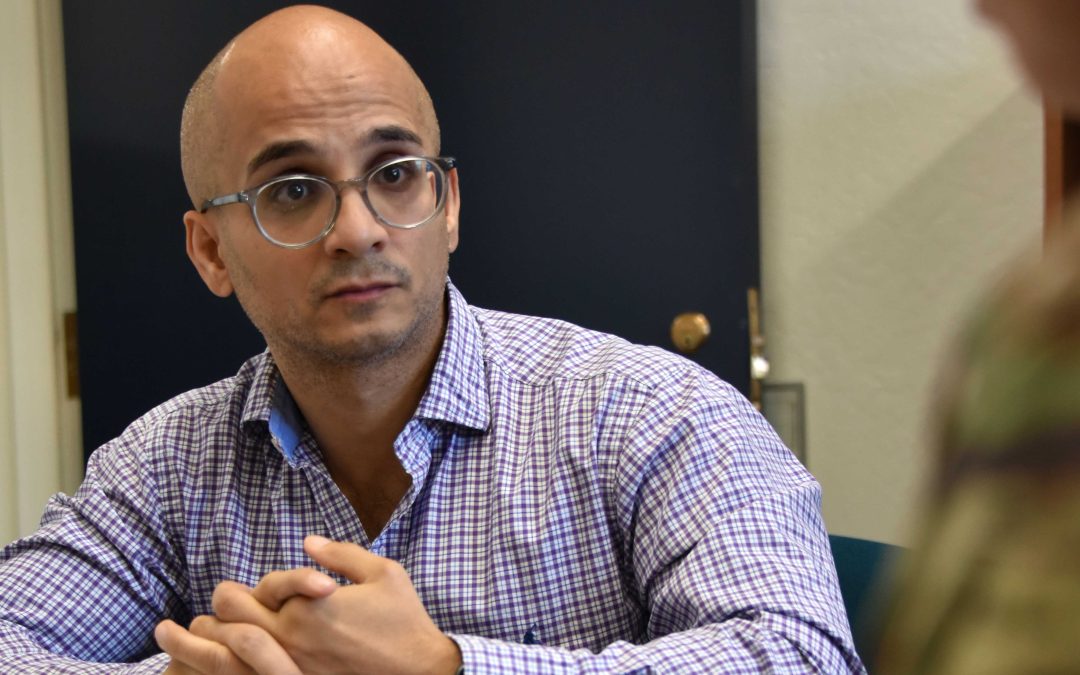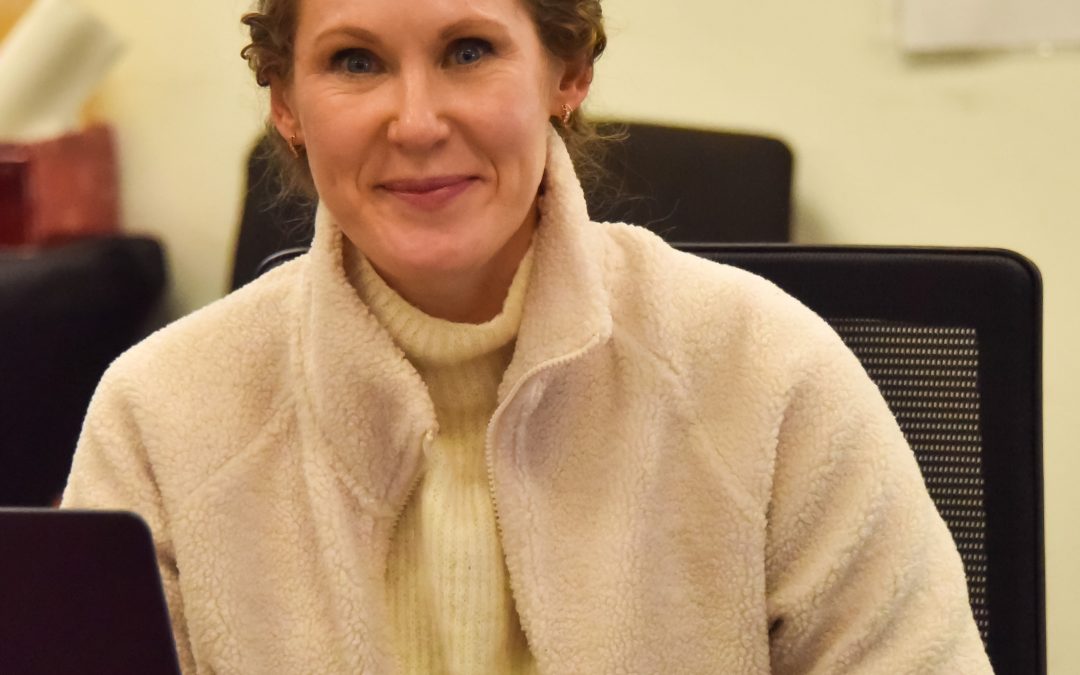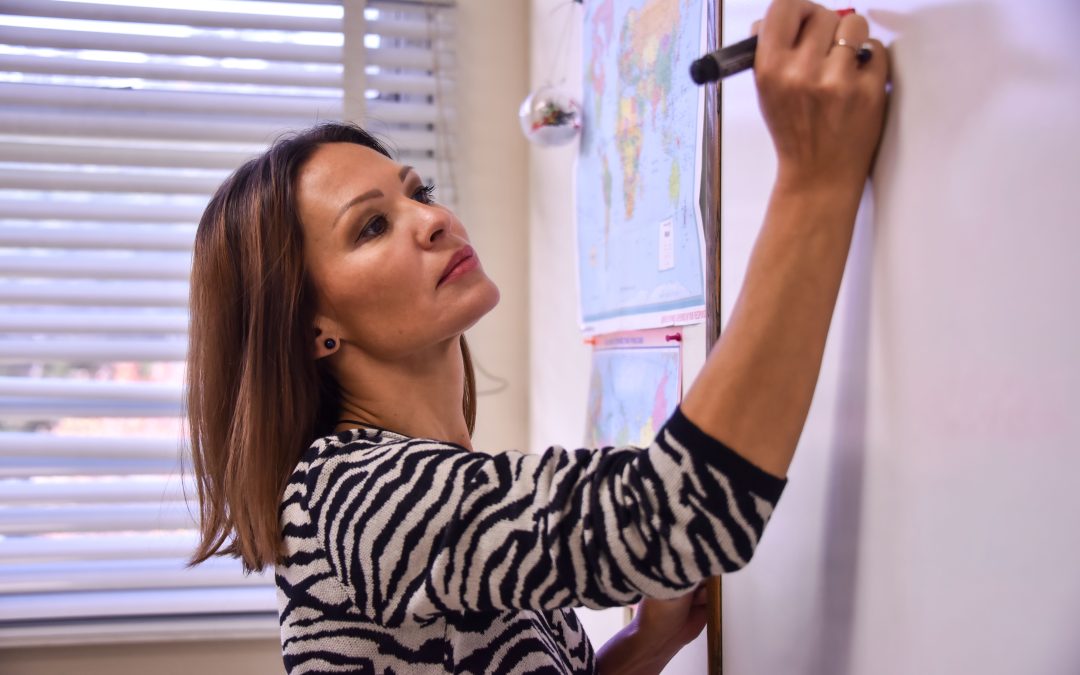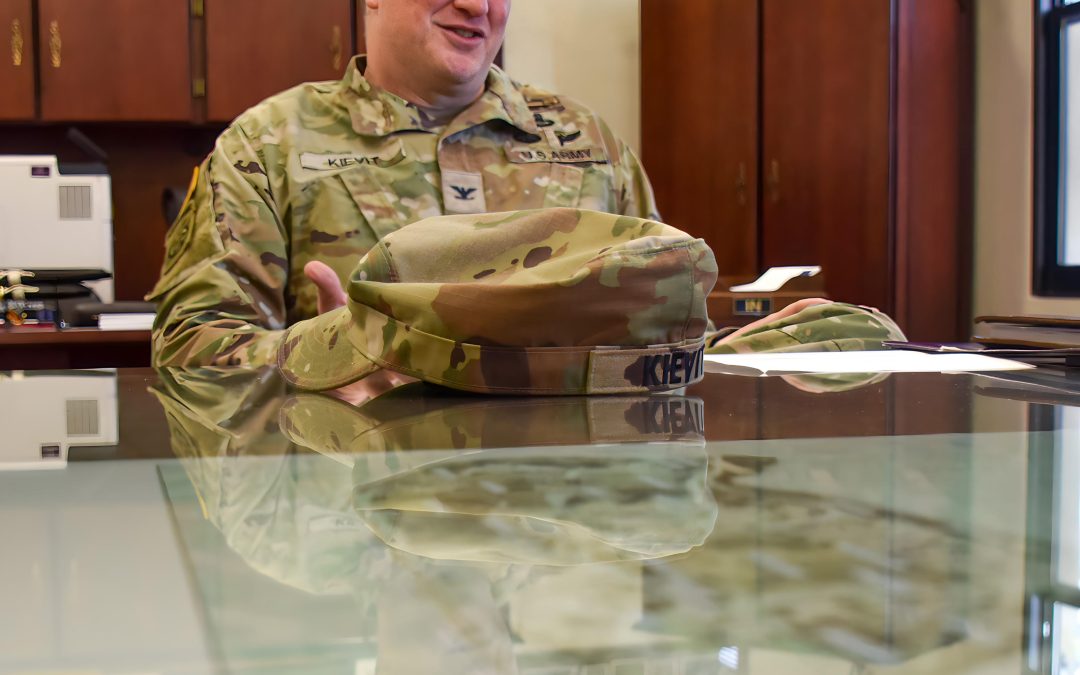By Chief Cryptologic Technician (Interpretive) Ian Wyatt, Information Warfare Training Command Monterey
MONTEREY, Calif. – On any given weekday morning, the Presidio of Monterey, home of the Defense Language Institute Foreign Language Center (DLIFLC), is bustling with activity–commuters arriving from off-base, students and teachers rushing to class, contractors unloading equipment to maintain or clean the school buildings.
Today though, the post feels empty. No students speed-walking to class at 7:49 a.m. while nervously glancing at their watch. No teachers gathering in hallways to loudly discuss the day’s lesson plan. Silence. In response to Coronavirus Disease 2019 (COVID-19) concerns, Sailors at Information Warfare Training Command (IWTC) Monterey, along with their joint-service colleagues, have transitioned entirely to remote and/or virtual learning.
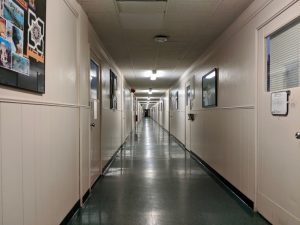
Empty schoolhouse halls are the new normal while students practice social distancing with online training in their barracks and homes. (Official DoD photo by Chief Petty Officer Ian Wyatt)
The move was part of the DLIFLC’s implementation of guidelines from the Department of Defense and Centers for Disease Control and Prevention, or CDC, to slow the spread of COVID-19. The measure allows students and faculty to continue foreign language instruction while maintaining recommended social distancing. Classes are being conducted via Microsoft Teams, a remote work platform which allows for video teleconference, document sharing, and screen sharing, all while participants remain in their personal residences.
Changes happened almost overnight. Recognizing the potential for a move to remote learning, the DLIFLC leadership team directed two practice days, during which students and instructors conducted virtual instruction from their residences in order to familiarize themselves with the software and identify technical issues. The lessons learned from the practice sessions allowed for a mostly seamless transition to fully remote instruction just three days later when Monterey County was placed under a “shelter in place” order.
“The migration was pretty seamless,” said Cryptologic Technician (Interpretive) 2nd Class Erin Olson, a two-time DLIFLC student. “We haven’t missed any class hours with the transition. We didn’t require anything more than a brief introduction to the program. We have had a few teachers who have had minor technical issues but we have been able to push forward with the material on our own. It is incredible the extent which we are utilizing this program and how well the network is holding up.”
The change has not been without problems. Many students and faculty experienced connectivity and bandwidth issues. People in small apartments with family or in the barracks with roommates have reported difficulty finding a dedicated quiet space free of distractions. One school building has been opened to provide these students with quiet rooms and reliable Wi-Fi while allowing for effective social distance. However, even after solving the logistical issues, teaching and learning a foreign language remotely remains challenging.
“I can only imagine this being extremely overwhelming for students to attempt to learn alone in their room,” said Senior Chief Cryptologic Technician (Interpretive) Virginia Soto. “The language learning pace and standards have not changed, but the way and which it is presented and provided to the student has shifted dramatically.”
“The downsides of the situation are not technical for us,” continued Olson. “It has more to do with teaching and learning styles having to be adjusted. I have been telling the students in my class ‘semper gumby’ [always flexible]. This is a lesson in resiliency for all of us. I feel it is an opportunity for us all to dig deep and find out what we are made of.”
The impact of COVID-19 has affected every aspect of life at the DLIFLC–academic and otherwise. Countless programs, procedures, and facilities have had to be adapted rapidly to minimize interruptions to operations while prioritizing the health and safety of all personnel. Tests are still being conducted within the schools, but with classes being divided into small groups to allow for proper distancing. The military dining facilities offer take-out only. The facility which conducts official testing has significantly decreased its capacity to maintain distance between students and allow for effective sanitization of stations in between tests.
Graduations, the weekly heartbeat of the DLIFLC, have been downsized and decentralized. The “mass graduations” on picturesque Soldier’s Field overlooking Monterey Bay, which usually combine graduates from across all schools on the DLIFLC, have been split up and delegated to the individual schools. Now, ceremonies are brief and informal, and no guests are allowed. School leaders give brief remarks, give students their diplomas, degrees, and awards, and send them on their way. For larger classes, students are brought in in small groups at timed intervals to maintain distance between participants. There are no handshakes.
There’s currently no indication of how long these measures will be in place, but IWTC Monterey and DLIFLC leadership remain dedicated to the health, safety, and training of the nation’s future military linguists.
“These are, no doubt, some difficult times for all in the command,” said Capt. Michael Salehi, commanding officer of IWTC Monterey. “However, I have been incredibly proud at how the students and staff have remained flexible and adapted quickly to the current challenges. Their demonstrated toughness and optimism in the face of adversity is inspiring and motivating. They are truly ‘holding fast,’ while at same keeping the ship on a steady course for continued success.”
IWTC Monterey, as part of the Center for Information Warfare Training (CIWT), provides a continuum of foreign language training to Navy personnel, which prepares them to conduct information warfare across the full spectrum of military operations.
With four schoolhouse commands, two detachments, and training sites throughout the United States and Japan, CIWT trains over 20,000 students every year, delivering trained information warfare professionals to the Navy and joint services. CIWT also offers more than 200 courses for cryptologic technicians, intelligence specialists, information systems technicians, electronics technicians, and officers in the information warfare community.
For more on Information Warfare Training Command Monterey, visit https://www.public.navy.mil/netc/centers/ciwt/IWTCmonterey/ and http://www.monterey.army.mil/Service_Units/IWTC_Monterey.html, or find them on Facebook.
For more news from Center for Information Warfare Training domain, visit www.navy.mil/local/cid/, https://www.public.navy.mil/netc/centers/ciwt/, www.facebook.com/NavyCIWT, or www.twitter.com/NavyCIWT.

